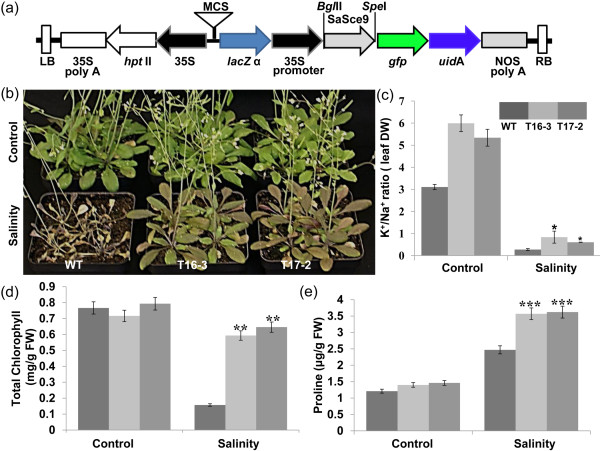Figure 4.
SaSce9 overexpressing Arabidopsis plants improved salinity tolerance. (a) Schematic representation of pCAMBIA1304 plasmid containing SaSce9 ORF at BglII and SpeI site driven by cauliflower mosaic virus 35S promoter, used for Agrobacterium mediated transformation of Arabidopsis using floral dip method; (b) Four week-old wild type (WT) and 35S-SaSce9 transgenic plants grown under normal conditions and salinity stress (150 mM of NaCl) after 20 days of stress. Note that WT plants could not sustain growth under this condition; (c) K+/Na+ ratio based on dry weight (DW) of rosette leaves; (d) Chlorophyll content; and (e) Proline content in the rosette leaves of four week-old WT and 35S-SaSce9 transgenic plants grown under normal conditions after 15 days of 150 mM NaCl stress. Error bars represent standard error of means based on three independent experiments. Comparison was made between WT and individual transgenic lines under control condition or salinity stress by paired t-test. ***, **, and * indicate significant differences in comparison with the control at P < 0.001, P < 0.01 and P < 0.1, respectively. WT represents Arabidopsis Columbia ecotype; T16-3 and T17-2 represent two independent SaSce9 transgenic lines. FW: fresh weight of rosette leaves.

